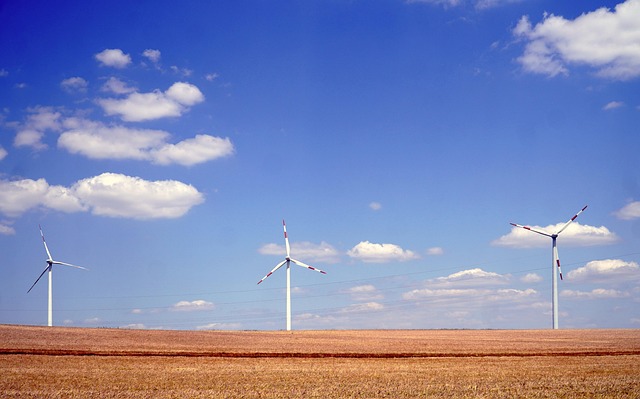Green Energy vs. Fossil Fuels: A Comparative Analysis
The debate between green energy and fossil fuels is one of the most pivotal discussions of our time. As the global community grapples with the effects of climate change, the hunt for sustainable energy sources has intensified. This article delves into the intricacies of green energy and fossil fuels, examining their advantages, disadvantages, and overall impact on society and the environment.
Understanding Green Energy
Green energy refers to energy derived from renewable and sustainable sources that have minimal environmental impact. These energy sources include solar, wind, hydroelectric, geothermal, and biomass energy. The hallmark of green energy is its ability to replenish naturally, making it a long-term solution for meeting global energy demands without depleting resources.
The Advantages of Green Energy
Green energy offers a plethora of benefits that extend beyond environmental protection. These advantages include:
- Environmental Sustainability: Green energy significantly lowers greenhouse gas emissions. By using renewable sources, we can mitigate climate change, reduce air and water pollution, and preserve biodiversity.
- Energy Independence: Utilizing locally sourced renewable energy reduces dependence on imported fossil fuels, enhancing national security and fostering local economies.
- Job Creation: The green energy sector is rapidly growing. It has the potential to create millions of jobs in manufacturing, installation, maintenance, and research and development.
- Long-term Cost-Effectiveness: Although initial investments can be high, solar panels and wind turbines become cheaper over time. The ongoing costs of maintenance and operation are significantly lower compared to fossil fuels.
The Disadvantages of Green Energy
Despite its numerous benefits, green energy also comes with challenges.
- Intermittency: Many renewable energy sources, such as solar and wind, are dependent on weather conditions and time of year, leading to variability in energy production.
- High Initial Costs: The up-front costs associated with purchasing and installing renewable energy systems can be prohibitive for some individuals and businesses.
- Space Requirements: Large solar farms and wind farms require significant land area, which can lead to land-use conflicts, particularly in densely populated regions.
The Landscape of Fossil Fuels
Fossil fuels, including coal, oil, and natural gas, have been the backbone of energy production for over a century. Formed from the remains of ancient plants and animals, these fuels are burned to create electricity, heat, and transportation fuel. While they have been instrumental in industrial development, their reliance raises serious environmental and social concerns.
The Advantages of Fossil Fuels
Fossil fuels come with some benefits that continue to lead many countries to rely on them:
- High Energy Density: Fossil fuels have a high energy content, which means they can produce substantial amounts of energy from relatively small volumes.
- Established Infrastructure: The existing infrastructure for extracting, transporting, and burning fossil fuels is well-developed, making it accessible and often cheaper than transitioning to new renewable systems.
- Reliability: Fossil fuels can provide continuous and stable energy production, essential for meeting the energy demands of modern life.
The Disadvantages of Fossil Fuels
On the flip side, fossil fuels pose significant disadvantages that have led to rising concerns over their use:
- Environmental Damage: Burning fossil fuels emits large amounts of carbon dioxide and other harmful pollutants, contributing to climate change and resulting in severe health problems for humans.
- Finite Resources: Fossil fuels are non-renewable resources that will eventually deplete. As extraction becomes more challenging, the cost and environmental toll of accessing these resources can rise significantly.
- Geopolitical Tensions: The global dependence on fossil fuels can lead to geopolitical tensions and conflicts over resource control and distribution.
Comparing Environmental Impact
When comparing the environmental impact of green energy and fossil fuels, the differences are stark. Green energy sources generally emit little to no greenhouse gases during operation, making them a much cleaner alternative. Conversely, fossil fuels are responsible for a significant proportion of global greenhouse gas emissions, which are recognized as the primary driver of climate change.
The life cycle impacts are also worth noting. Fossil fuel extraction, refinement, and combustion release toxic pollutants into the air and water, adversely affecting human health and ecosystems. In contrast, while green energy sources can have localized environmental effects—such as land use concerns with wind farms or habitat disruption with hydroelectric dams—these impacts are considerably less severe in terms of overall harm to the planet.
Assessing Economic Factors
The financial implications of transitioning from fossil fuels to green energy play a crucial role in the debate. On one hand, fossil fuels have traditionally been cheaper due to established extraction and transportation processes. However, as technology advances and demand for green energy grows, the costs associated with renewable solutions continue to decline. Solar and wind energy, in particular, are increasingly competitive with fossil fuels, and in many regions, they are now the most affordable energy sources available.
Governments are also beginning to factor in the hidden costs of fossil fuels, including health care expenses from pollution-related illnesses and environmental restoration efforts post-extraction. These external costs can tip the economic balance in favor of green energy solutions, showcasing not only the benefits of cleaner energy but also the long-term savings associated with public health and environmental protection.
Technological Advancements
Technological innovations play a significant role in shaping the energy landscape. In recent years, advancements in solar panel efficiency, battery storage, and wind turbine design have made green energy sources much more viable and appealing. Innovations in smart grid technology are also enabling more efficient distribution of electricity, thus reducing waste and optimizing energy use.
Fossil fuel technology, while advanced, is becoming increasingly scrutinized. Efforts to make fossil fuels cleaner—such as carbon capture and storage (CCS) technology—are in development. However, the costs and feasibility of these technologies remain challenging and are often met with skepticism regarding their long-term effectiveness.
Policy and Regulation
Government policies and regulations significantly impact the energy landscape. Global leaders are increasingly recognizing the importance of transitioning to renewable energy. Initiatives such as the Paris Agreement aim to limit global warming and promote renewable energy technologies. Incentives for green energy adoption—such as tax credits, rebates, and grants—are implemented in many regions, further hastening this transition.
Conversely, fossil fuel industries continue to benefit from subsidies and regulatory support in numerous parts of the world, complicating the transition to cleaner energy. The intertwining of fossil fuel economies and politics creates a challenging environment for stakeholders hoping to promote green energy policies.
Public Perception and Societal Impact
Public opinion is a vital component of the energy debate. Growing awareness of climate change and environmental issues is driving increased support for renewable energy sources. Many individuals and communities are leaning toward embracing sustainable alternatives not only for their environmental benefits but also for their potential to foster local economies and energy independence.
However, the fossil fuel industry maintains a significant presence in many regions, with communities reliant on fossil fuel jobs and economic contributions. The transition to green energy must therefore consider the social implications, tracking to ensure that energy workers are not adversely affected as industry shifts occur.
The Future of Energy: Trends and Projections
As we look toward the future, it is clear that the shift to green energy is not just a trend; it is a necessity. International organizations, governments, and businesses are progressively integrating sustainability into their operations and future plans. The International Energy Agency (IEA) predicts that renewables will account for a larger share of electricity generation in the coming decades, drastically reducing the reliance on fossil fuels.
Innovations in technology, supportive policies, and changing consumer behaviors indicate a robust growth trajectory for green energy. As investment in renewable technologies accelerates, we can expect advancements that will further decrease costs and improve efficiency, making green energy even more accessible to a broader population.
Conclusion
In summary, the debate between green energy and fossil fuels encapsulates much more than just energy production; it is about the future of our planet and the legacy we leave behind. While fossil fuels have offered a historically significant role in powering global development, the harmful environmental and social implications of their continued use make a strong case for transitioning to sustainable energy sources.
This comparative analysis highlights that while both energy types present benefits and challenges, the long-term benefits of green energy align more harmoniously with sustainable development goals. By continuing to embrace renewable technologies, together we can work toward a cleaner, healthier, and energy-independent future.




